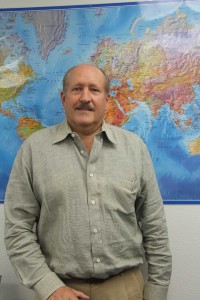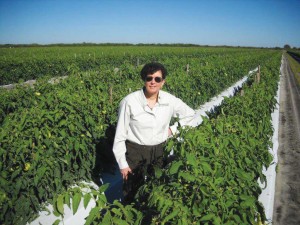Biologicals: Filling the Gaps
The European Union has severely limited the number of traditional crop protection products growers have available to them to fight pests. A growing list of biological solutions are primed to replace the now banned items, but a difficult regulatory process continues to stymie their use.
“Europe has reduced the number of chemicals on the market, eliminating hundreds of active ingredients, and passed the sustainable use directive, which requires farmers to use fewer chemicals,” says Pam Marrone, founder and CEO of Marrone Bio Innovations, a producer of several biological products. “Biologicals are the named alternative, but the regulatory process has not caught up with that. There’s a gap in the market with the reductions and restrictions on neonicotinoids and many other products. Europe is a very important market, but the regulatory process is still difficult.”
There is some hope, at least in other parts of the globe.
The rest of the world is streamlining regulatory processes, Marrone says. Last year, Brazil, for example, suggested the approval process for biologicals should be accelerated. Latin America and Europe are both of interest for the company, Marrone says, but “the regulatory processes in Europe are very difficult compared to other parts of the world.”
John Atwill, technical consultant with Grow More, a nearly 100-year-old manufacturer of a variety of crop protection products, sees some hope.
“More and more countries are adopting what the U.S. EPA has modeled, which is a good thing,” he says. “It helps level the playing field. It’s more streamlined. Usually if a product is approved here, it’s rubber stamped in other countries.”
Right now biologicals account for only about $3 billion of a more than $60 billion crop protection market. But if the trends continue as they are, and more companies – including the multinationals – enter the biological market, that ratio could change drastically.

Atwill
Growing Competition
Having large companies enter the biological space can be a mixed blessing.
As Marrone says, her company has all the data to show its products add value for the grower, “but if you’re a small company, you can only reach so many growers at a time. The advent of the big companies coming into this sector will change that. They have a much bigger reach. We think it will improve the perception of these products for everybody.”
The Coming Shakeout
It’s not just big companies that are entering the market.
In India, for example, a certain discovery from a public institution might be shared with many companies, Marrone says. “There is no exclusivity like we have in the U.S. Therefore, you might have 20 companies making the same Metarhizium or Bt or Paecilomyces. It’s just too difficult to sort through all those different companies. A lot of times the products don’t work. Dozens and dozens of small companies are trying to make stuff – bathtub brews.” Of course, that will change with time and companies with quality products enter the market.

Marrone
Markets
Asia is a big untapped market, Marrone says. There are many pests needing control and resistance to chemicals.
“Biologicals are growing fast in Asia. It’s just winding through the morass of products. The customer, the grower, sees them like it was maybe 15 years ago in the U.S. – as snake oils, and they don’t have a good reputation. But that will shake out over time and follow what has happened here and in Latin America.”
North America has had a long history of biologicals, although it’s the most mature market, there’s plenty of opportunity for growth, Marrone says. “But growth in other parts of the world is outpacing the U.S. simply because we’ve had a much higher adoption over time.”






